M1.1 solar flare erupts from AR 2816, produces coronal mass ejection (CME)
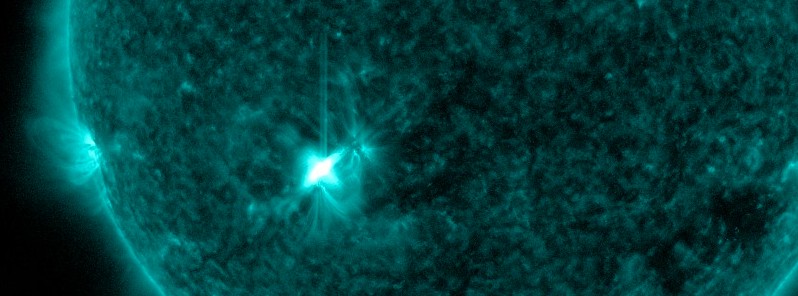
A moderately strong solar flare measuring M1.1 at its peak erupted at 23:42 UTC on April 19, 2021. The event started at 23:19 and ended at 23:59 UTC. The source was Active Region 2816 (beta).
Associated with this event were Type II (shock velocity of 750 km/s) and Type IV spectral radio signatures, indicating a coronal mass ejection was produced during the event.
LASCO C2 imagery observed a CME signature off the E limb, first visible at 00:36 UTC on April 20.
Initial analysis and subsequent modeling indicated no Earth-directed component. However, further analysis will be conducted as more imagery becomes available, SWPC forecasters said.
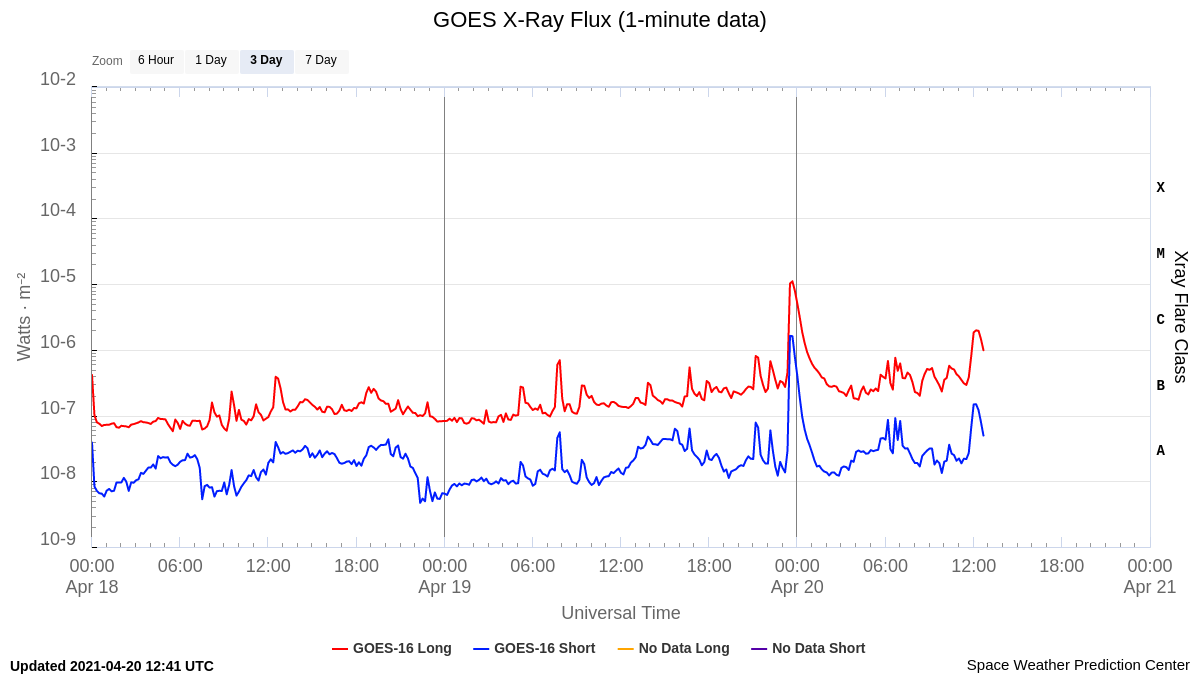
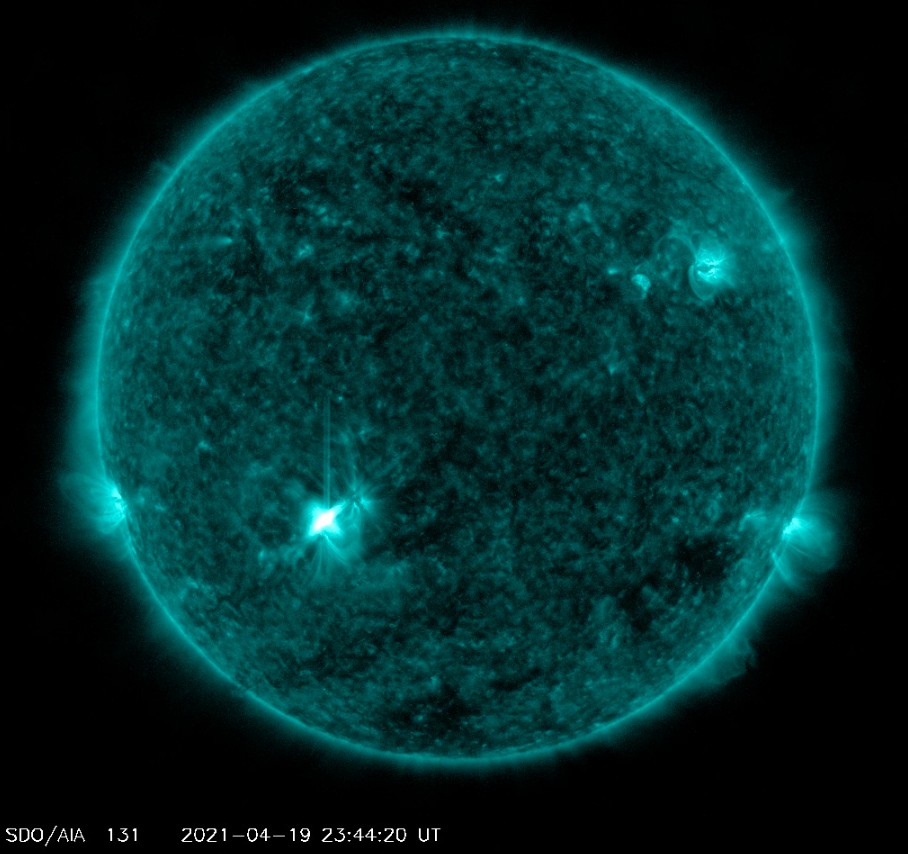
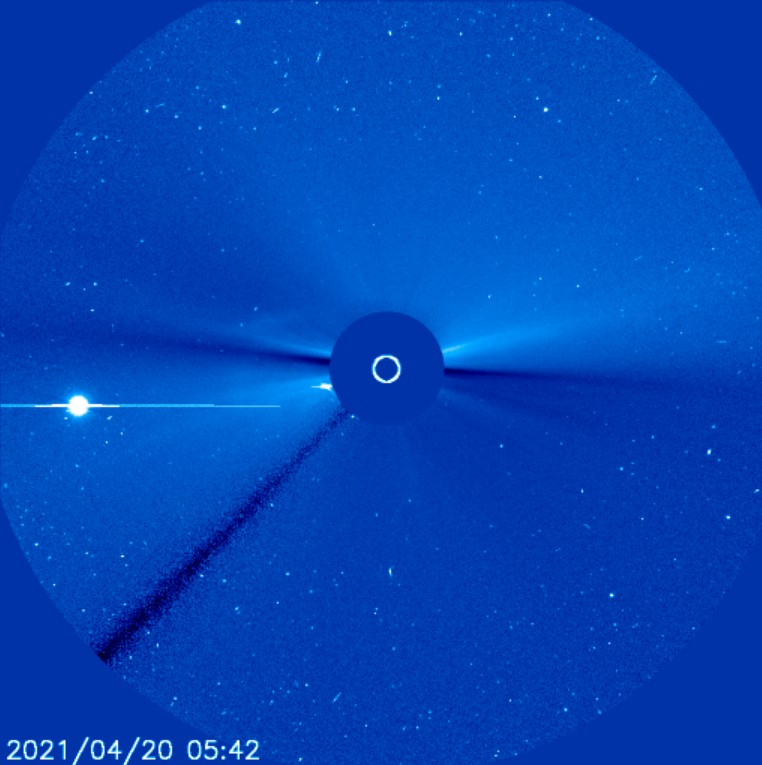
There are currently three named active regions on the Earth side of the Sun.
Region 2816 (beta) showed some evidence of growth yesterday before producing the M-class flare.
Region 2817 (beta) exhibited rapid growth in 12 hours to 12:30 UTC on April 20 and has produced numerous B-level events.
New Region 2818 (alpha) has just rotated onto the SE limb and was numbered this period.
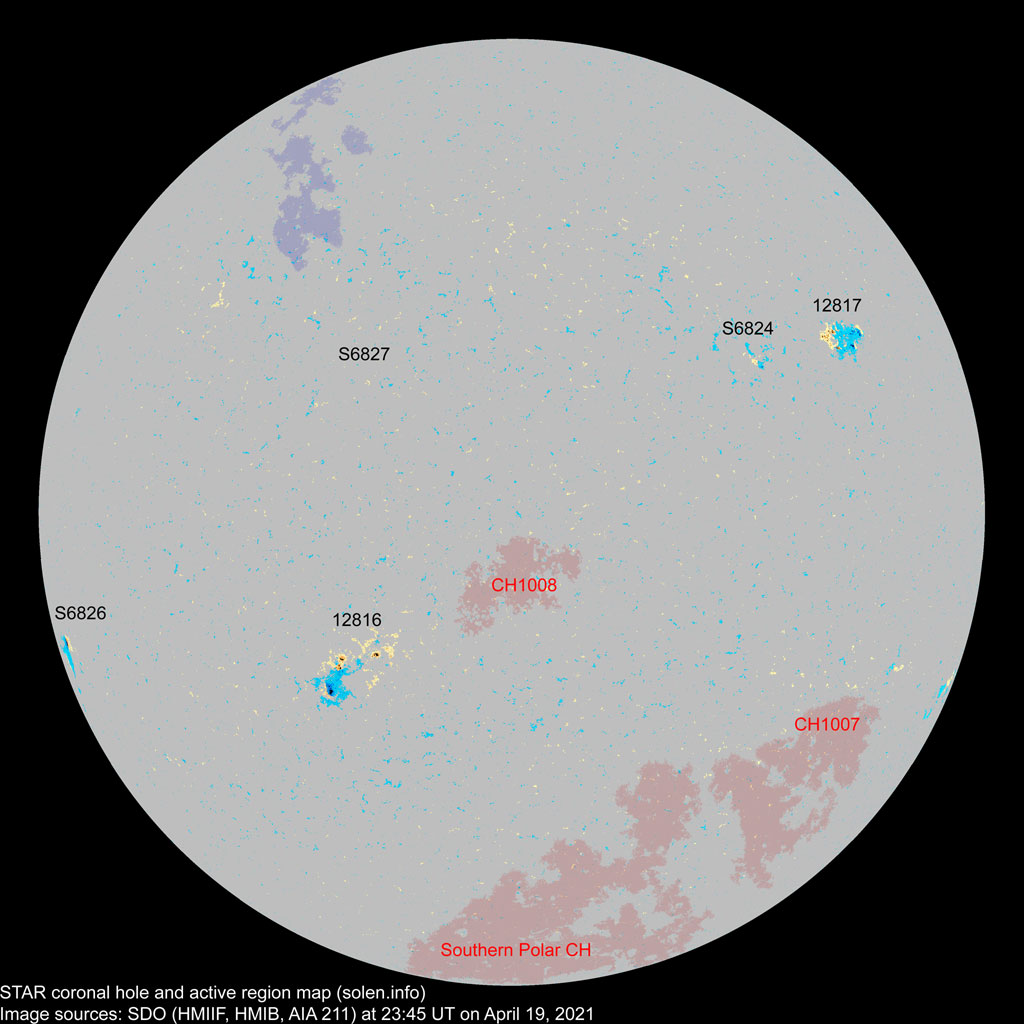

Solar activity is expected to be very low, with a chance for C-class and a slight chance for R1 – Minor flare activity through April 22.
The greater than 2 MeV electron flux reached high levels over the past 24 hours with a peak flux of 10 148 pfu observed at 15:45 UTC on April 19. The greater than 10 MeV proton flux was steady at background levels.
The greater than 2 MeV electron flux is expected to reach high levels through April 22 and the greater than 10 MeV proton flux is expected to persist at background levels.
The solar wind environment was under the influence of a negative polarity coronal hole high speed stream (CH HSS) in 24 hours to 12:30 UTC on April 20. The total field strength peaked at 7 nT and Bz, while highly variable, was bound between +/- 6 nT. The solar wind was steady between 600 and 650 km/s, but briefly peaked closer to 675 km/s. Phi angle was predominantly negative. Solar wind parameters are expected to gradually decrease on April 20 as CH HSS influence abates.
The geomagnetic field was unsettled to active during the same period with continued negative polarity CH HSS activity. .
The geomagnetic field is expected to be unsettled to active the first half of April 20 due to continued, but waning, negative polarity CH HSS influence.
Thereafter, a return to mostly quiet conditions is anticipated.
Featured image credit: NASA/SDO AIA 131

Commenting rules and guidelines
We value the thoughts and opinions of our readers and welcome healthy discussions on our website. In order to maintain a respectful and positive community, we ask that all commenters follow these rules.